#University of Central Asia
Explore tagged Tumblr posts
Text
Notes from Central Asia: A university with a direct social purpose up in the mountains
Though I have been in touch with the University of Central Asia (UCA) for the last 4-5 years, I could see its campuses in Bishkek and Naryn only last week. Naryn is a town on the Tian Shan mountains that borders Kyrgyzstan and China. This campus provides good quality (and high cost but heavily subsidised) liberal undergraduate education to nearly 200 students, mostly from the three countries in…
View On WordPress
0 notes
Text
Why i see Jason Todd as Central Asian:
Both Batman and him thought Lady Shiva could be his mother, suggesting he has asian features because like come on, Batman the greatest detective in the world. These are possible all over Eurasia (e.g. the Sami people have similar features) but is more common in Asia (for obvious reasons)
He has red hair which he dyes. While natural red hair can be found all across Asia (usually through mutation and in very small percentages), the Asian ethnic groups with the most chance of having red hair are: Uyghurs and Tajiks. These two ethnicities are a mix of Central Asian ethnicities (with Uyghurs being a mix of Central Asian, Turkic and Mongolian ethncities and the Tajiks being Afghani)
#jason todd#batfam#batfamily#tajik jason todd my beloved#my post#red hood#batman#dc comics#batman comics#detective comics#central asia#red hair#dc batman#dcu#dc universe#dc#dc robin#dc jason todd#jason todd robin
70 notes
·
View notes
Text
March 1, UC 0079

Zeon launches its first Earth landing operation. The 1st Terrestrial Mobile Division makes planetfall in Central Asia, eliminating the Federation's Baikonur spaceport. After reaching the Caspian Sea, the unit diverges to push into the Middle East and Europe.
By this time, Zeon forces have begun to adopt the Zaku 2 F-type in favour of the heavier C-type, which was rendered obsolete by the Antarctic Treaty – more than half of the 1st Terrestrial's mobile suits are MS-06F Zaku 2s.
(MS IGLOO 2: The Gravity Front)
#Gundam#Sunrise#Bandai#Universal Century#One Year War#March#Zeon Earth Invasion#Central Asia#Principality of Zeon#MS-06F Zaku 2#MS Igloo#gundam calendar
9 notes
·
View notes
Text
Undertale in my culture))) 🇰🇬

it was just an idea, so I'm implementing it)
Sans and Paps are already in my account
Sooo
My insta:
https://www.instagram.com/biku_paint?igsh=Njlyc3U3eGJ4MGZv
My tgc:
#undertale au#undertale fanart#undertale#underverse#toriel#art#kyrgyzstan#central asia#my universe#my culture
8 notes
·
View notes
Text
What do you MEANNNNN
#classes scheduling bullshit urg#need to change history class last minute bc needs to be both modern and not abt america#which like real appreciated i enjoy both those things greatly theyre kind of my main thing#BUT. these bitches dont offer any classes this semester w that criteria talking abt the part of the world im interested in!!#like bro you cannot be doing this to me im an AMERICAS girl why do we have no classes on the americas#theres one native american hist class i was going to take 2 potential schedules ago but thats not modern i guess? or i wouldnt feel#confident theyd accept it for outside the usa so i dont want to waste my priority scheduling nabbing a spot#but like otherwise absolutely nothingggggg#im looking at the bulletin and theyve approved a brazil class a modern latam class a caribbean class a mexico caribbean and central am.#class and a us relation to the americas class that could all theoretically work. AND THEY ARE OFFERING NONE OF THEM#also like the few classes they do offer that i could take barely work w my schedule (getting the good prof for internatl econ which i NEED)#like bruh. gonna grab a spot in the southeast asia class for now and ask around to see it other options (like the natam class could work)#also some of the above list fills 1 requirement nd some others so im going to hope the caribbean class or smth is offered in the spring#like bro let me learn about the western hemisphere jfc#why is it this freaking impossible to take a basic history course on the americas ive been keeping an eye out every semester#AND ITS WHERE WE LIVE + CLOSEST NIEGHBORS LIKEEE????#grrrrr#ur fuckin testing me [redacted] university. and to think we started today so well
1 note
·
View note
Text
.....sighssssss
I hope, I will find enough strength to design some stuff, at least, with my main party and Inquisitor

still salty they didn't make cool gowns and suits for each companion and advisor for Winter Palace ball in Wicked Eyes and Wicked Hearts quest
wouldn't it be hot and sexy to go around and beat up enemies in dark halls of the Palace in our expensive outfits, covered in blood

#Vivienne deserved better more than any of us#my Inquisitor has all Desi vibes in my heart#thinking about desi alike suit.... as much as it can make sense in DA universe#still dont understand where Tevinter fashion came from as inspiration tbh im just looking at some central asia and slavic aesthetics#if i start looking up something for Dorian#and ofc something cool comfy powerful for Cassandra#mystuff
49 notes
·
View notes
Text
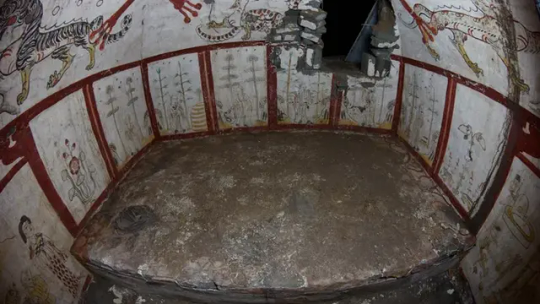

Stunning Tang Dynasty Murals in a Tomb Unearthed in China
A Tang dynasty tomb unearthed in China dates from the 700s, and the murals on its walls give an unprecedented view of daily life at the time.
Archaeologists in northern China have unearthed a centuries-old tomb decorated with stunning murals portraying daily life during the Tang dynasty, which ruled much of central and eastern China from A.D. 618 to 907.
The tomb includes never-before-seen depictions of daily life, including men threshing grain and making noodles.
One of the murals also depicts what appears to be a "Westerner" with blond hair and a beard who probably hailed from Central Asia, Victor Xiong, a professor of history at Western Michigan University who wasn't involved in the discovery, said in an email.
The tomb was discovered in 2018 during roadwork on a hillside on the outskirts of Taiyuan, the capital of China's northern Shanxi province, but archaeologists only reported on the completed excavations last month.
According to an article from China’s government-owned news agency Xinhua, an epitaph in the tomb states it was the burial place of a 63-year-old man who died in 736, as well as his wife.
The tomb consists of a single brick chamber, a door and a corridor. Scenes from life during the Tang dynasty adorn the walls of the tomb, the door, the corridor, and the platform on which the coffin was placed. The domed ceiling of the chamber is painted with what may be a dragon and phoenix.



Tomb guardians
Several figures painted near the door represent the "doorkeepers" or guardians of the tomb; they are wearing yellow robes and some have swords at their waists, according to Xinhua. Other murals portray natural landscapes, as well as men threshing grain, women grinding flour, men making noodles and women fetching water from a well.
They are rendered in the traditional "figure under a tree" style that was popular in the Shanxi region at the time, the South China Morning Post (SCMP) reported. As its name suggests, the style features people carrying out activities underneath beautifully depicted trees.
Many of the figures in the murals look like the same Chinese man and woman, and archaeologists think they may have been the two people buried in the tomb. The woman, in one scene, is dressed in a colorful gown and is leading four horses, alongside a bearded man holding a whip.
Other murals show mountains, trees and camels, and the series of paintings around the coffin may represent the Chinese tomb owner at different stages of his life, Xinhua reported.
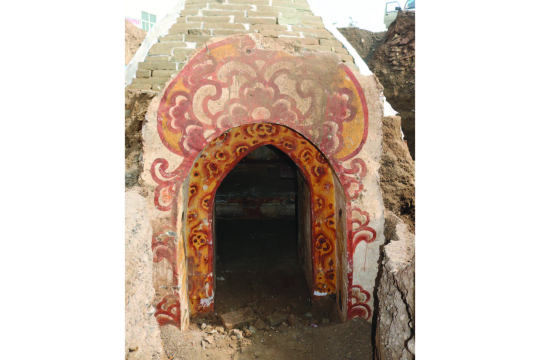

Traditional style
The murals in the tomb appear to be well preserved. "The most familiar theme depicted in these murals is that of human figures under trees — a tradition that harks back to the Han dynasty [206 B.C. to A.D. 220]," Xiong said. Similar murals had been found in China's Xinjiang, Shandong, Shaanxi and Gansu regions.
He noted that the blond "non-Han" man leading camels has distinctive clothing. "Based on his facial features and outfit style, we can identify him as a 'Westerner,' likely a Sogdian from Central Asia," Xiong said. (The Sogdians were a trading people along the Silk Road routes between Asia and Europe at the time, living mainly in what are now Tajikistan and Uzbekistan.
He added that many of the murals gave "never-before-seen" representations of daily chores and labor during the Tang dynasty.
By Tom Metcalfe.
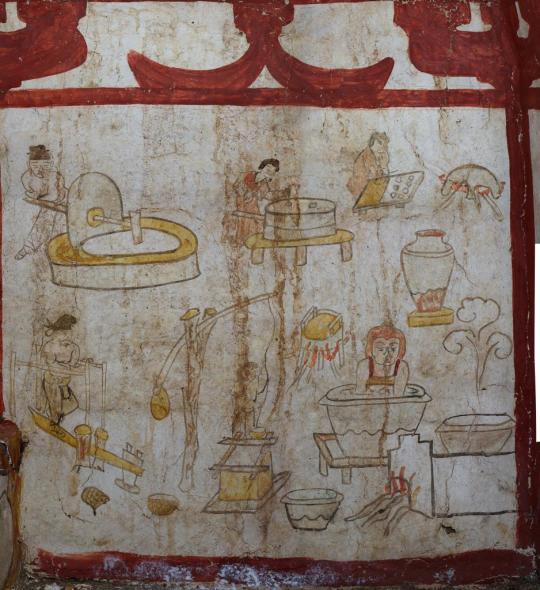
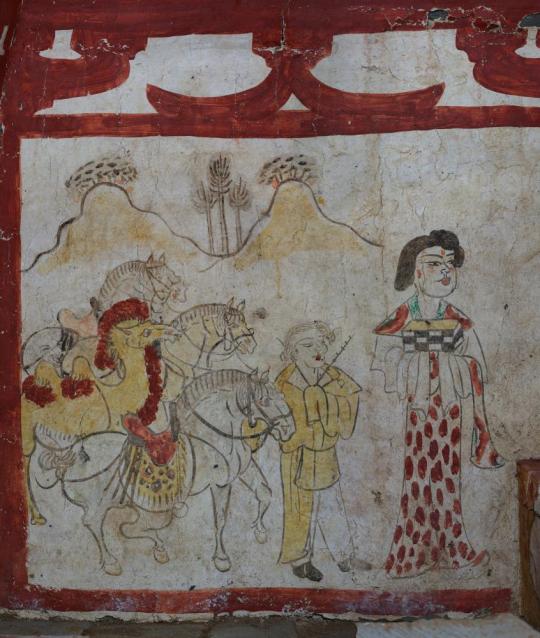

#Stunning Tang Dynasty Murals in a Tomb Unearthed in China#Taiyuan#Shanxi province#China#ancient tomb#ancient grave#ancient murals#ancient artifacts#archeology#archeolgst#history#history news#ancient history#ancient culture#ancient civilizations#ancient china#chinese history#chinese art#ancient art
560 notes
·
View notes
Text



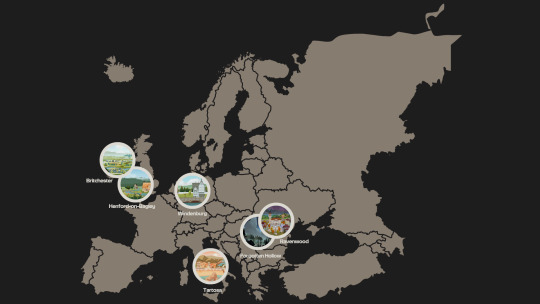

Over the last few weeks, as I've been building the stories for the characters in my save file, I started thinking about the Sims universe as a whole and how I want my Sims to travel between worlds. It got me thinking that some worlds feel like they're just a short 4-hour car ride away, while others feel like you'd need a plane to get there.
So, I decided to map out my sims universe. I got a lot of inspiration from different Reddit posts as well as the EA descriptions of each world. This has been so helpful for me as I plan out the buildings I want to place in each world. It has been so helpful with finding inspiration for creating builds. I hope you can find this helpful too.
I'm really happy about my Sims universe turned out. I'd love to hear what you think about it! Are there any worlds you disagree with me on? Also, when are we getting an African world, EA?
North America
New Crest reminds me of suburban New York, mostly because you can still the city skyline from there.
Brindleton Bay reminds me so much of New England.
San Myshuno is quite obviously New York.
Willow Creek gives me a New Orleans vibe.
Magnolia Promenade is somewhere in the south because of the name (magnolias grow in the mostly in Southern United States - Mississippi, Louisiana, Alabama, Florida, Georgia, and South Carolina). I placed it close to Willow Creek for story telling purposes.
Chestnut Ridge gives me a strong Texas vibe.
Del Sol Valley is undoubtedly Los Angeles.
Oasis Springs I think of as Palm Springs with the desert and all, also the Langraabs live there.
San Sequoia I think of as San Francisco mainly because of the Golden Gate Bridge and Bay area, I have all my tech gurus living up there.
Strangerville is straight up Area 51 with all the weird stuff going on there.
Granite Falls gives me a National Park vibe, so I chose my favorite, Yellowstone which is mostly in Wyoming.
Copperdale seems to be in the rocky mountains, I placed it in Montana because of the old mining town description. Butte, Montana used to be a huge mining town.
Moonwood Mill reminds so much of the thick woods in the Pacific West somewhere Washington or Oregon.
Glimmerbrook I imagine is close to Moonwood Mill and the witches and the werewolves are always beefing.
Evergreen Harbor gives me a strong Pacific West port city like Vancouver (I know Vancouver is not in the US, but you get the drift).
Sulani reminds me so much of Hawaii, the beautiful beaches, volcanoes, and mountains and the culture portrayed by Sulanians.
Ciduad Enamorada reminds me so much of Mexico City, Mexico.
South America
Selvadorara gives a strong Amazonian vibe so I placed it in Brazil.
Europe
Britchester because of Britchester uinversity reminds me of Universtiy of Oxford, or University of Cambridge so I placed it in the UK.
Henford-on-Bagley gives off a strong English country vibe so I placed it South Central England.
Windenburg gives off a German vibe because of the style of buildings placed in the world.
Forgotten Hollow I think of as somewhere in Transylvania so I placed it in Romania.
Tartosa is undoubtedly mediterranean so I placed it in Italy.
Ravenwood's architecture fits very well with Romania.
Asia
Tomarang with the tuk tuks and the tiger sanctuary reminds me of Indonesia.
Mt. Komorebi, my absolute favorte world, is Japan. I can't wait to visit someday.
P.S. Batuu is not included in my sims universe because it is in space, I don't anticipate my sims ever traveling there, but if I ever feel otherwise, I will include it in here.
558 notes
·
View notes
Text
Ron Deibert’s “Chasing Shadows”

If you'd like an essay-formatted version of this post to read or share, here's a link to it on pluralistic.net, my surveillance-free, ad-free, tracker-free blog:
https://pluralistic.net/2025/02/04/citizen-lab/#nso-group

Since 2001, Ron Deibert has led Citizen Lab, the world's foremost "counterintelligence group for civil society," where they defend human rights activists, journalists and dissidents from the digital weapons deployed by the world's worst autocrats and thugs:
https://citizenlab.ca/
Citizen Lab's work is nothing short of breathtaking. For decades, this tiny, barely resourced group at a Canadian university has gone toe to toe with the world's most powerful cyber arms dealers – and won.
Today, Simon and Schuster publishes Chasing Shadows, Deibert's pulse-pounding, sphinter-tightening true memoir of his battles with the highly secretive industry whose billionaire owners provide mercenary spyware that's used by torturers, murderers and criminals to terrorize their victims:
https://www.simonandschuster.com/books/Chasing-Shadows/Ronald-J-Deibert/9781668014042
Mercenary spyware companies are based all over the world, but the global leader in providing these tools is Israel, where the signals intelligence Unit 8200 serves as a breeding ground for startup founders who grow wealthy serving dictators around the world, thanks in part to Israel's lax export standards for cyberweapons.
Most notorious of these companies is the NSO Group, whose Pegasus malware has been deployed by corrupt, narco-affiliated Mexican politicians, murderous Saudi royals, and dictators in Central Asia, Latinamerica, and all around the world.
The NSO Group's founders told their customers that they were invisible, as ethereal as shadows, so their products could be deployed without fear of detection or consequence. At the same time, NSO ran a disinformation campaign for the broader public, insisting that they have the highest ethical standards and closely monitor their products' use to ensure that it is only deployed against terrorists and serious criminals. This latter strategy is backstopped by harassment and intimidation of journalists who investigate this narrative – I have personally been threatened by lawyers retained by the NSO Group.
Diebert and Citizen Lab disprove both of NSO's narratives. Their technical staff developed incredibly clever, subtle methods to detect malware infections all around the world and identify who had been targeted by NSO's products (they were greatly aided in this by farcical blunders in NSO's products).
In so doing, Citizen Lab not only showed that customers for mercenary spyware will someday be discovered – they also thoroughly disproved the company's narrative about its squeaky-clean image and high morals.
Much of Deibert's book is a true-life technothriller recounting the technology, the politics, and the human cost of a largely unregulated industry whose protectors are among the most powerful people in the world.
This book contains many never-revealed revelations from Deibert's distinguished career, like notes from a meeting where Stephen Harper's top spooks and Privy Council officials threatened and intimidated Deibert over Citizen Lab's reports on Saudi Prince Mohammed Bin Salman's use of spyware on Canadian residents.
Deibert also reveals some juicy bits of less consequence, like the fact that it was he who tipped off the BBC's Rory Cellan-Jones that Research In Motion was helping Middle Eastern autocracies and India's far right government spy on dissidents' Blackberry devices, just minutes before RIM co-founder Mike Lazardis was to sit for a televised interview with Cellan-Jones for the BBC's Click. When Cellan-Jones asked Lazaridis about the matter, Lazaridis at first denied it, then demanded that the camera be turned off before halting the interview:
https://www.youtube.com/watch?v=Q6iGe7vuGeQ
But the majority of Deibert's book is a string of horrifying stories of dissidents, activists, journalists, opposition politicians and the people around them having their lives peeled open by companies like NSO Group and their competitors. They run the gamut from multiple, successive presidents of Catalonia to the US-based children of activists agitating for limits to sugary drinks in Mexico.
On the way, Deibert is hounded by all kinds of dirty-tricksters, like the bumbling ex-Mossad spook that Black Cube – whom Harvey Weinstein hired to harass his victims – hired to discredit the organization:
https://www.nytimes.com/2019/01/28/world/black-cube-nso-citizen-lab-intelligence.html
He's also chased by troll armies working on behalf of South American despots, the corrupt Modi government of India, and middle eastern autocrats in the UAE, Saudi Arabia and elsewhere. While most of these trolls are anonymous jerks, a few high-profile serial online harassers-for-hire are singled out by name, their deeds publicly connected for the first time.
Deibert shows the human impact of mercenary spyware: the connection between these companies' products and intimidation, arbitrary detention, punitive rape, torture, and murder – for example, he painstaking lays out the role that the NSO Group's products played in the murder and dismemberment of the US-based journalist Jamal Khashoggi.
This is a dirty business, but it's also a lucrative one. Citizen Lab goes eyeball-to-eyeball and toe-to-toe with farcically wealthy, well-resourced attackers, who've waxed fat by abetting corruption and sadistic greed.
But this isn't mere rage-bait. Deibert's story is an inspiration, both in how it shows how principled, decent, hardworking people can make a difference – Citizen Lab researchers repeatedly discover and burn the vulnerabilities exploited by mercenary spyware, a process Deibert likens to disarming them – but also in the bravery and resilience of the subjects who trust Citizen Lab to analyze their devices, risking everything to come forward and tell their stories.
Citizen Lab is enmeshed in a global, digital community of human rights defenders – a community that wouldn't exist without the internet. Deibert's life's work is to create an internet that is fit for human thriving – and to wrestle control of technology away from the monsters who project their greed and sadism around the world through our devices.
#pluralistic#reviews#cybersecurity#security#infosec#spyware#mercenary spyware#citizen lab#cdnpoli#israel#sigint#human rights#digital rights surveillance#books#gift guide#university of toronto#ron deibert
132 notes
·
View notes
Text
I can't believe i made a whole ass species lore just for a wild kratts oc my god i never thought it could come this way but..thats the fun of it i guess LMAOO
Anyways..
Meet the Sickle-horned Equdore, a species of antelope found in the northern part of Kazakhstan where forests lie. Where their ancestors, the bluebuck, migrated from the south coast of africa to central asia.
The word Equdore (pronounced "eqoodor") means equine-like antelope, due to their appearance being similar to those of modern day horses though due to their two hooved they are not considered in the equus family.


The sexual dymorphism of the Sickle-horned Equdores are somewhat similar to those of deers or mooses, the male being bigger and more patterned with bigger horns. However not all male Sickle-horns have big horns, some have smaller horns usually from too much stress of poor diet during development of the horns growing, female Sickle-horns prefer those with bigger horns to show their health and potential. Male Sickle-horns are the only sex with the distinctive sickle shaped horns, hence their name.
Female Sickle-horned Equdores are slightly smaller than the male by a foot, however just because they are smaller than the males, does not mean they are small compared by a human, standing 8 feet tall. Female Sickle-horns have more curved horns that doesn't resemble an actual sickle, while the male horns of the Sickle-horned Equdore are shaped for both protection and attraction, female horns are only used for protection.
The social behavior of them are also similar to wild horses or chickens. One alpha male (fuck..i can't take that phrase seriously due to THOSE alpha male dudes you see in instagram reels or in podcasts..) and a herd, usually 8 to 15 females, the male provides safety and food by communicating that theres an abundance of food, if the male..example, finds a fruit tree, he will call the herd and let them eat first by helping to kick the tree so the fruits could fall down, easier to pick on, and the male will eat after a few have eaten already.
The unique part of the Sickle-horned Equdore is each pattern from each individual species are different, so they have their own set of pattern only own by those who bear it, making them easy to distinguish from others. And their fur is blue in colour, while not very blue, if you colorpicked their fur the color is more the blue area even though it looks more purple. Blue pigment is very- almost impossible in mammals, some "blue" furred mammals are usually more grey.
I also even made what the creature power suits of the species, both sex, though the powersuits are still a big smaller compared to the actual animal, they still stand around 7-8 feet. Poor chris, he's more teal and blue than his usual green colour, like the blue heron episode...

So what are the Sickle-horned Equdores known for other than their sickle-shaped horns and their blue fur?
They are famous for the creation of the mythical greek animal, the unicorn. When greek adventurers went to central asia, they discovered the rarest mutation of the Sickle-horns, the mutation that made them have a singular horn, while in real life unicorns were from the misinterpertation of rhinos, in my Wild Kratts universe, the unicorn mythology came from this species but historians theoried that it came from rhinoceros because they haven't found or rediscovered the species that created the famous fantasy animal in the first place.
This mutation is REALLY REALLY rare, less than 2 percent have this mutation that caused them to have a singular horn.
(Picture of Aoife and Einhorn. Oc on the left (Aoife) belongs to @martincrushcameback while Einhorn belongs to me.)
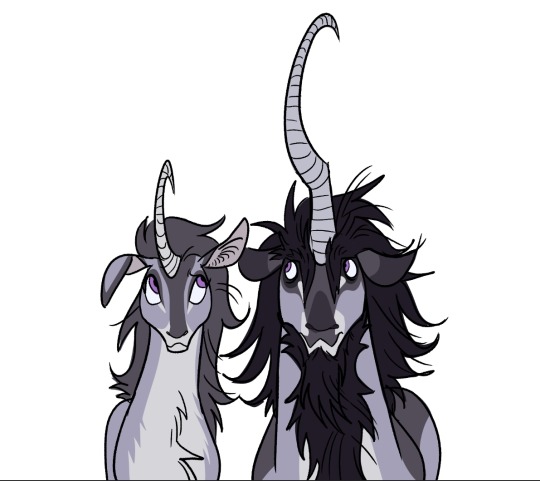
The burden of having such a unique birth defect is that you have a low chance of surviving or creating a herd of their own, female Sickle-horns with this condition are less likely to find a mate or a group to be accepted in, while males have a hard time to create their own herd, and their singular horn couldn't fight a male who already has a herd and they can't stand a chance, because whos more likely to win? A highly skilled person with two swords or the one that only has one and is average skilled?
One horns are so rare that records say only one was found, though many scientist disaproved the one horned as "not real" thinking the photo was painted to look like it had one horn, since they didn't believe that unicorns existed..lol
And Sickle-horned Equdores were once highly poached and hunted during the mongol empire, the people tried domesticating them so they could use them as a source of transportation for the extremely wealthy and war for the mightiest soldiers, unfortunately the domestication was a fail, so instead, they hunted them for their beautiful coat and horns for decor for the rich and those in power. So much that they reduced their population from a million to only 200 thousand left today. Their population is growing at a steady pace due to orginizations to protect these endangered animals. Fun fact, the Sickle-horned was rediscovered very early in the 1970's, historians found remnants of Sickle-horn hide and horns thinking these creatures are long extinct back in the 1900's.
Sooo..yeah, thats all i got for the species of Einhorn and Aoife..guuuhhh so much research..
Also, Equdore is a genus of antelope, meaning, like the big cat family including jaguars, tigers, lions and such, is their own family branch of the antelope family..MEANING...that there are other Equdore species not only existing to the Sickle-horned!
Also just to make sure Equdore is a fictional animal, there is no such genus of antelope called an Equdore..bah..
#fandom#wild kratts#art#fanart#artwork#art style#doodles#wild kratts fanart#wild kratts au#wild kratts oc#Einhorn#aoife the unicorn#Sickle-horned Equdore
138 notes
·
View notes
Text
URALIC LANGUAGES 101
an over-simplified guide for people who have never studied them
from real questions I have received
as I am finally qualified enough to talk about them
WHAT?
A language family spanning (mostly northern) Eurasia. The three biggest languages by amount of speakers are Hungarian, Finnish, and Estonian.
WAIT, WHAT DO YOU MEAN THERE ARE MORE?
The Sámi languages might be the most famous of the "smaller" Uralic languages, but have you heard about Karelian? Udmurt? Hill Mari? Nganasan? There are 38~42 Uralic languages that we know as of today.
WHERE ARE THESE OTHER LANGUAGES?

(image description: the locations of the Uralic languages on a map. The Uralic languages span from modern-day Hungary, the northern Nordics, and northern Russia.)
(CONTINUE READING UNDER THE CUT)
BUT I THOUGHT HUNGARIAN WAS ALTAIC / RELATED TO TURKISH?
Modern science links Hungarian to the Uralic languages. The links to "Altaic" (many on the field don't believe in the Altaic theory) and the Turkic languages are speculative.
ARE THEY RELATED TO ENGLISH?
No, they are a separate language family. English is more related to Russian than Finnish or Hungarian.
HOW DID THEY END UP WHERE THEY ARE NOW?
We still haven't figured this out, but the Uralic peoples' proposed homeland is often located north of Central Asia.
HOW DO THEY KNOW THESE ARE RELATED TO EACH OTHER?
Linguistics uses many different ways to find out relations between languages. With the Uralic languages, there are many cognates (=words that come from the same root word) that exist in most languages. These words can be used to reconstruct Proto-Uralic, a hypothesis of what the original Uralic people might have spoken.
Examples:
"tongue, (language)" (Finnish) kieli, (Estonian) keel, (Veps) kel', (N.Sami) giella, (Erzya) keľ, (Beserman) kål, (E.Khanty) köł, (Mator) kašte
"two" (Finnish) kaksi, (Courland Livonian) kakš, (Ter Sami) kïkktʼ, (Moksha) kafta, (Mari) kok, (Komi-Zyrian) kyk
HOW DO THESE LANGUAGES SOUND LIKE?
Here are selected samples of text from a few different branches of Uralic languages:
NGANASAN: Mənə ńinti̮ˀam ńiluməni̮nə inśüδüˀ, mi̮əďindi̮ˀam hüətə. (I never sledge in my life, I always go by foot.) SELKUP: Nılʲčik qumɨp mee qontɨrämɨt čääŋka. (We have not seen such a person.) BESERMAN: Picʼi pilə̑ sʼed jə̑ rcʼijenezlə̑. (To the little boy with black hair.) MANSI: Mənə kńigaðəmtu miśiəm. (I gave him/her the book.) NORTH SÁMI: Sáhpán njuikii girjji duohken. (The mouse jumped from behind the book.) TVER KARELIAN: Mie hüviin zdaičin igzamenati miun, na felÍdšerku pandih. (I passed the exams well and I was put [to work] as a nurse.)
If you have more questions about these languages, feel free to ask me! I am no professor but am majoring in this at the university so I know more than the average person hehe
129 notes
·
View notes
Text
The Great Salt Lake isn’t just drying out. It’s warming the planet. (Washington Post)
Like some dystopian astronaut, Melissa Cobo would hike the searing flats of the dried-out Great Salt Lake every couple of weeks, hauling a heavy backpack attached by a hose to what looked like the lid of a cake dome. What remained of the lake often seemed out of reach as she struggled through hot mud, clay and a weird crystalline layer that broke with her footsteps onto a greenish muck.
“You see the water, but you never actually get to it, no matter how many hours you walk,” Cobo said.
Through these grueling treks, Cobo, then a Utah State University graduate student, and her adviser, Soren Brothers, discovered more disturbing evidence that dried-out lakes are a significant source of carbon dioxide emissions — one that has not been included in the official accounting of how much carbon the world is releasing into the warming atmosphere.
In a new study in the journal One Earth, the researchers calculated that 4.1 million tons of carbon dioxide and other greenhouse gases were released from the drying bed of the Great Salt Lake in 2020, the year Cobo and others collected the samples. This would amount to about a 7 percent increase in Utah’s human-caused emissions, the authors found.
While other researchers have documented carbon emissions from dried-out lakes — including the Aral Sea in Central Asia — Brothers said that his study tried to calculate what part of the emissions from this major saline lake could be attributed to humans, as the Great Salt Lake has been drawn down for human use, a decline worsened by climate change and the West’s megadrought of the past two decades.
“This is the first time we’re saying, ‘This is something that’s on us,’” said Brothers, now a climate change curator with the Royal Ontario Museum.
279 notes
·
View notes
Text
March 4, UC 0079
The Principality of Zeon dispatches a mining unit to occupied Central Asia. The unit will establish numerous bases across Eurasia and extract vital resources for Zeon's war effort, under the supervision of Colonel M'Quve.
#Gundam#Sunrise#Bandai#Universal Century#One Year War#March#Zeon Earth Invasion#Central Asia#Principality of Zeon#M'Quve#gundam calendar
6 notes
·
View notes
Text
"Proving that change is possible if the will to create it is present, Chinese megacities like Beijing that were once famous for their apocalyptic grey skies are enjoying the lowest levels of air pollution they’ve experienced in the 21st century.
Falling 42% from an average high in 2013 when Chinese air pollution was higher than 50 particles per cubic centimeters of city air, the change has increased the lifespan of Chinese urbanites by 2.2 years.
The news comes from a report published by the University of Chicago called the Air Quality Life Index which listed some of the actions taken by the Chinese government to reduce air pollution, described by the CCP as a “war on pollution.”
This has included reducing the presence of heavy industry like steel production in city centers, as well as restricting coal power plants from being built inside cities while shuttering those that were already there.
Some cities like Beijing have reduced the number of cars allowed on the roads during peak hours, similar to London’s congestion charge. Lastly, China’s mass urban tree-planting campaigns have been well documented.
While the life expectancy has risen on average 2.2 years, some cities have seen far more drastic increases. Citizens living under the new “Beijing Blue,” are predicted to live 4 additional years, while those 11 million in the north-central city of Baoding are predicted to gain 6.
“At the foundation of those actions were common elements: political will and resources, both human and financial, that reinforced each other,” the report said. “When the public and policymakers have these tools, action becomes much more likely.”
In fact, the decline in China’s pollution levels has been so drastic that it lowered the world average, which the report says would have increased if not for the Middle Kingdom’s war on pollution.
Although Chinese city air is still several times higher than the WHO’s recommended minimum, it shows what’s accomplishable with political and civic effort—particularly to its neighbors in South Asia where the report warns air quality is worsening."
-via Good News Network, September 1, 2023
#china#pollution#air pollution#coal#carbon emissions#pollution reduction#tree planting#beijing#air quality#aqi#life expectancy#asia#south asia#good news#hope#hope posting
805 notes
·
View notes
Text
By combining food-bearing trees and shrubs with poultry production, Haslett-Marroquin and his peers are practicing what is known as agroforestry — an ancient practice that intertwines annual and perennial agriculture. Other forms include alley cropping, in which annual crops including grains, legumes, and vegetables grow between rows of food-bearing trees, and silvopasture, which features cattle munching grass between the rows. Agroforestry was largely abandoned in the United States after the nation’s westward expansion in the 19th century. In the 2022 Agricultural Census, just 1.7 percent of U.S. farmers reported integrating trees into crop and livestock operations. But it’s widely practiced across the globe, particularly in Southeast Asia and Central and South America. According to the U.N. Food and Agriculture Organization, 43 percent of all agricultural land globally includes agroforestry features. Bringing trees to the region now known as the Corn Belt, known for its industrial-scale agriculture and largely devoid of perennial crops, might seem like the height of folly. On closer inspection, however, agroforestry systems like Haslett-Marroquin’s might be a crucial strategy for both preserving and revitalizing one of the globe’s most important farming regions. And while the corn-soybean duopoly that holds sway in the U.S. heartland produces mainly feed for livestock and ethanol, agroforestry can deliver a broader variety of nutrient-dense foods, like nuts and fruit, even as it diversifies farmer income away from the volatile global livestock-feed market.
[...]
Trees actually have a much longer and more robust history in the Midwestern landscape than do annual crops. Think of the Midwestern countryside before U.S. settlers arrived, and you might picture lush grasses and flowers swaying in the wind. That vision is largely accurate, but it’s incomplete. Amid the tall-grass prairies and wetlands, oak trees once dotted landscapes from the shores of Lake Michigan through swathes of present-day Indiana, Illinois, Iowa, and Missouri, clear down to the Mexican border. These trees didn’t clump together in dense forests with closed canopies but rather in what ecologists call savannas — patches of grassland interspersed with oaks. Within these oak savannas, which were interlaced with prairies, tree crowns covered between 10 percent and 30 percent of the ground. They were essentially a transition between the tight deciduous forests of the East and the fully open grasslands further west. And in the region where Haslett-Marroquin farms — part of the so-called Driftless Area, which was never glaciated — trees proliferated even more intensely. In pre-settlement times, according to a 2014 analysis coauthored by Iowa State University ecologist Lisa Schulte Moore, closed-canopy forests of oaks, sugar maples, and other species covered 15.3 percent of the area, and woodlands (low-density forests) took up another 8.6 percent. Prairies — the ecosystem we readily imagine — composed just 6.9 percent. Oak savannas made up the rest.
10 September 2024
99 notes
·
View notes
Text
MUSUTAFU in my mha dr
now playing...black list - hime
AKA; the devils resort

GEOGRAPHY
"when i hear that song, i wanna be with you"
musutafu (MST) prefecture is an island off the southern coast of japan located in the phillipine sea. its about 500-800km away from honshu, has 25,000 mi of land and is home to 35.3 million people. MST houses the most biodiverse tropical rainforest in japan (and one of the three most biodiverse in asia) which covers the entire island. MST has mild winters and minimal snow. it rarely reaches under 60/50 degrees F (10/15C?). both summer and spring are extremely humid.
HISTORY
"buffalo soldier, dreadlock rasta"
i never script colonialism clean out, i just make it different. because im always like wait if we dont have colonialism why tf are so many people speaking european languages? makes no sense right? anyways heres how it worked (in all of my DR's btw); europeans had very little power & money compared to locals who integrated with the culture (including locals of european descent) and it was more of a "leader in name" thing. in actuality, colonialism was more similar to a trade partner agreement with colonies, and colonies themselves were very hard to keep--and usually made more money and had more clout than their european counterparts. MST had this situation with spain, england and portugal. as it was an island (and a rather big one) it was already very cut of from japan culturally, economically & socially. so when the mainland went in seclusion for the meiji restoration, the europeans had already gotten full access to MST.

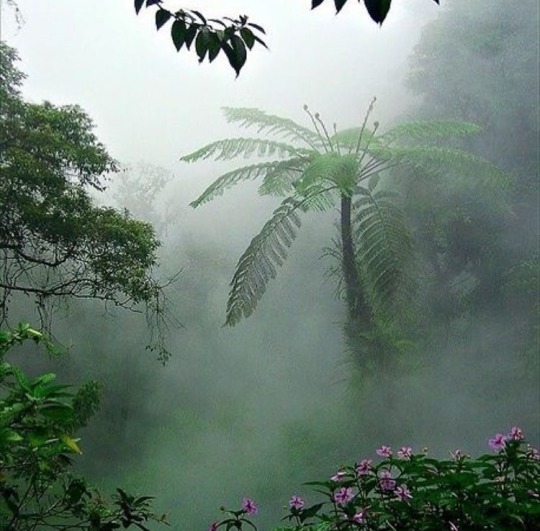
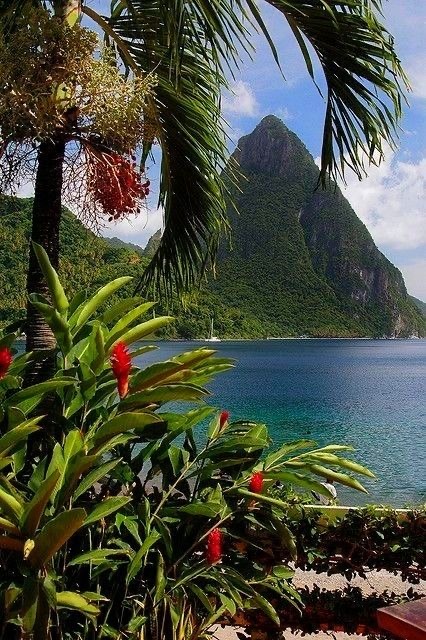

CULTURE
"90 degress inna the shade, temperature tun up"
linguistics the standard language is a portuguese-spanish-tagalog-japanese fusion? and more japanese dominant. no fucking clue how thatll sound.
diversity MST is very racially & ethnically diverse, with a steady flow of immigrants from all over the world. a few prominent origin points include ; south east asia, central america, the carribbean, usa, western europe, south america, taiwan and india. but of course there are many more. the natives are pretty racially diverse as well, about half of the japanese population is "afro-japanese" which is genetically similar to aetas or melanesians.
motorsports drag racing is fully decriminalized and extremely normal. so much so that entire tournaments and elaborate race tracks are built to encourage it. (partially because of the tourism it brings) but before you can do any drag racing you need a permit or license. its very normal for celebrities and heroes to drag race, theres even a yearly competition for celebrities.
lifestyle lazy, indulgent and leisurely. days are spent relaxing at a beach, vibing at a local cookout or shopping. were very friendly, open and relaxed. its a city with very big & bold personalities. most people are ambiverts and its cartoonishly easy to make friends. unfortunately the culture can be a little shallow at times.
beauty standard few are fussy on beauty standards but a visible sun tan is universally preferred. however theres two big rules: no fake tanning under any circumstance & never tan more than two shades darker. in terms of body types, both men & women with toned bodies and "nice" asses are attractive--but for women the addition of being curvy is preferred.
religion among the japanese population the most practiced religion is catholism. this branch of catholism is very heavily mixed with shintoism & buddhism though.
mardi gras/carnaval the prefectures biggest holiday. its both the best and the worst. the sense of community is a focal point, millions of people celebrating and having fun (including the sizable portion of non-christians). everywhere is packed, music is blasting and half the city is drunk and/or high. by night everyone forgets how to act. surely the busiest day for MST based heroes.

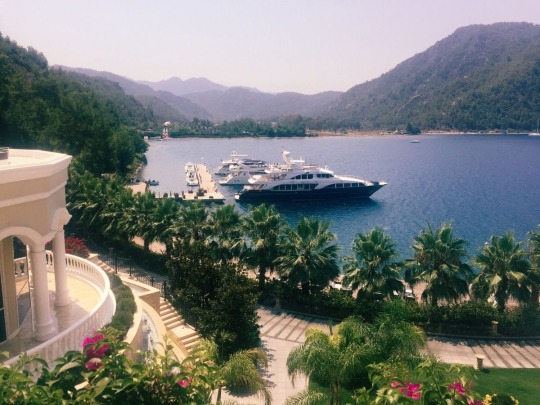
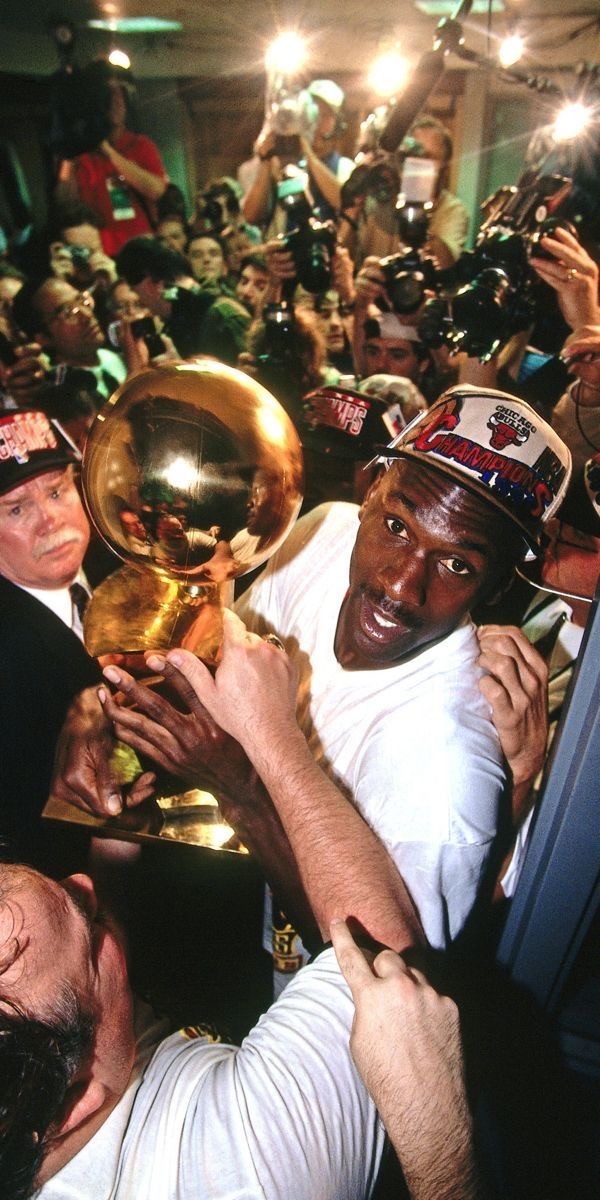

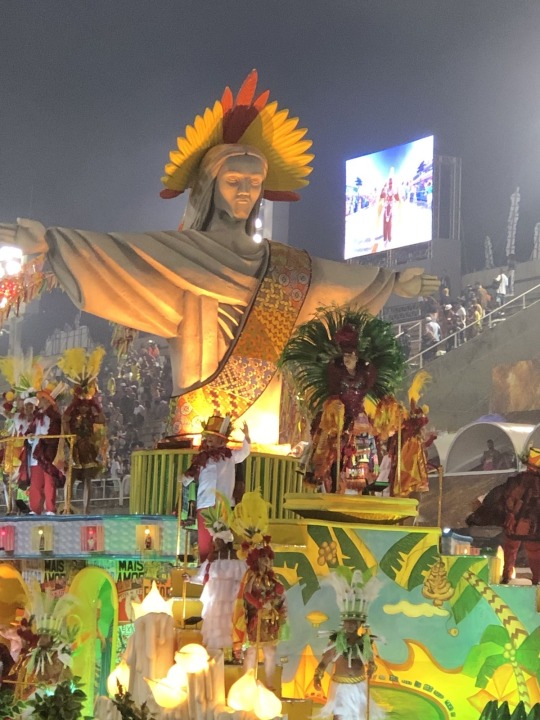
MUSUTAFU CITY DISTRICTS (16 total but im only writing for 4)
"on an island in the sun, we'll be playing and having fun"
the beach durrr the city has a ton of beaches, but this one is the most iconic, large and populated. its right in front of the cities biggest shopping center (what is basically our equivalent of times square...but not as dirty or ghetto). theres always people at this beach, hanging out, on a work break or at a cookout.
the ghetto about 2-3 districts are classified as ghettos. they have an extremely high crime rate, but low quality of life, income & rent. expect seas of street vendors, houses stacked on eachother, music playing all through the night and walls panted with street art. (urarakas district ����)
the islands a fifteen island archipelago off of the cities coast. considered middle class or lower middle class. life in the islands is slow and easy going. many people work in agriculture or fishing so its known for food & open air markets. the islands have a fun nightlife scene but its generally more laid back. (my district)
rural district the largest district in the city. known for its rich traditional japanese culture, the abundance of natural marijuana and nature. the district is very sparsely industrialized, especially compared to the rest of the city, so its mostly jungle/rainforest. theres also so much wildlife there! and disturbingly large roaches. something cool about it is this biiig ass gate surrounding the whole district! (todoroki family's district)
all districts have a fair share of mongrels / stray dogs. many people take them in to "guard" the house, or just to care for them
people from the islands like to have cute lil sea animal mailboxes!
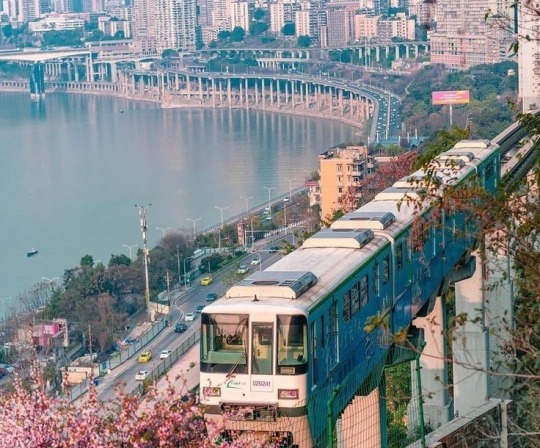




KNOWN FOR
"as i recall i know you love to show off"
love for sports. soccer, basketball, volleyball, baseball & surfing are extremely popular (among both genders)
lots of the population has a shopping addiction
elaborate heists.
trashy reality tv.
big film / tv industry.
high crime rate.
musutafuans want to go to the beach like every fucking day.
really good music.
clubs, casinos, nightlife in general.
beautiful beaches. white sand & clear blue water.

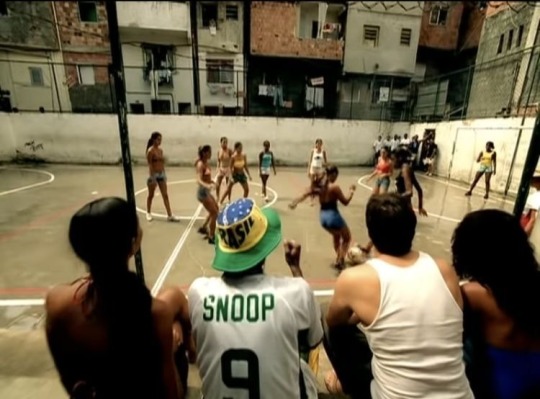



POP CULTURE
"aserejé, ja, dejé"
GTA game based on MST
love & hip hop: MST
brazilian funk, rnb, afro beats, amapiano, dancehall, reggae, dembow, reggaeton and rap are really popular. way more than non japanese/latin pop music
real housewives of MST
we have golden crust, jollibee, mama empanada, and kfc but no mcdonalds 😬
havianas are really trendy.




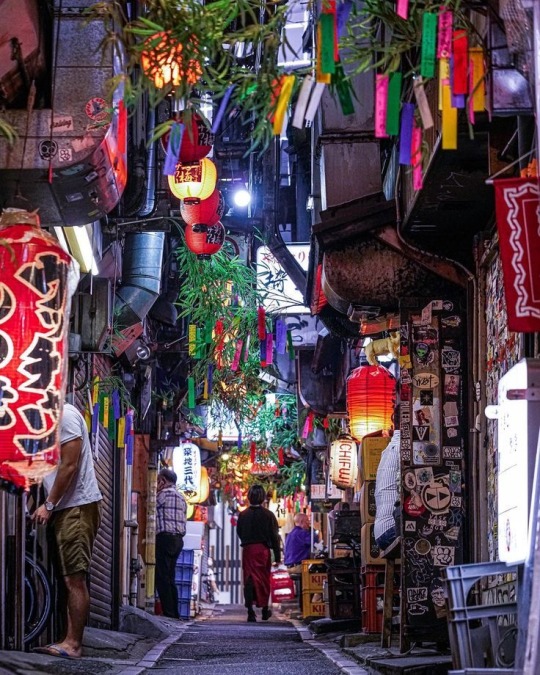
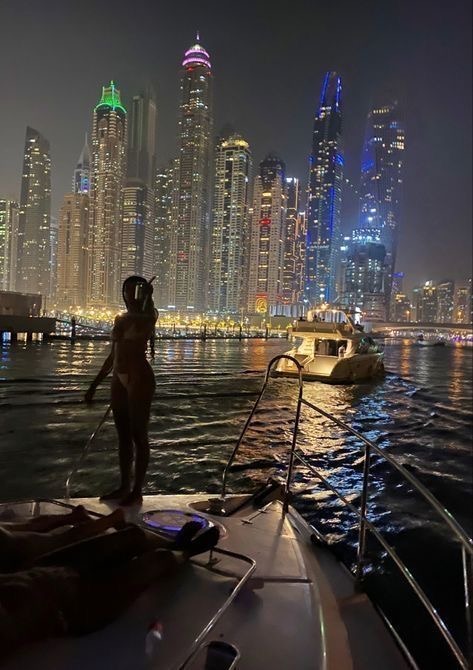
im actually considering scripting my version of MST in some of my other DR's (idol dr especially) but im on the fence.
if any of this inspired you your free to include some for you dr <3
#shiftblr#shifting blog#anti shifters dni#shifting community#desired reality#shifting realities#shifting motivation#reality shifting#dr rambles#shifting#mha dr#shifting to mha#mha shifting#mha shifter#mha drself#dr scripting#dr scrapbook#anime shifting#reality shifter#reality shift#mha au#shifting reality#shifter#bnha shifting#bnha dr
81 notes
·
View notes